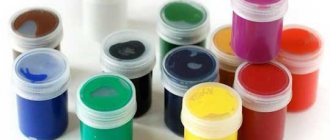What are dishes
It is difficult to tell what kind of dishes there are, since its history goes back as many millennia as the history of mankind. Archaeologists, based on kitchen finds, draw conclusions about the development of society at one time or another. Today, the process of development and improvement of tableware continues. Various types of dishes can be divided not only by purpose, but also by the materials from which they are made.
In the long list of dishes one can find rare names of national and highly specialized items.
In a general format, experts divide all dishes according to their purpose:
- For cooking food; Cooking utensils.
- For serving;
Tableware for table setting. - For storage.
Dishes for storing food.
The gradation of the tableware empire is not limited to this list. Within each group, further division continues, taking into account materials, products, actions with them, etc. But from what and for what purpose the dishes are made, its main task is to feed a person and make him happy.
What set of utensils should every housewife have in her kitchen?
Each kitchen owner has a certain set of dishes. No wonder they say that two housewives cannot get along in one kitchen. Choosing a kitchen arsenal, like many other things, requires an individual approach. Each woman, guided by personal experience, collects her own collection.
Each kitchen owner has a certain set of dishes.
An approximate list of a novice housewife:
- Pan (2-3 pieces of different sizes);
- Frying pan (2-3 pieces of different diameters and depths);
- Knives (3-4 pieces, taking into account purpose and convenience);
- Utensils for the oven: baking tray, baking dishes, ceramic pots, duck roasting pan, etc.
- Teapots (2-3 pieces);
- Other utensils: for spices and sugar, can opener, whisk, ladle, etc.
This list is formed as needed and updated over time.
Choosing a kitchen arsenal, like many other things, requires an individual approach.
Modern cooking and gastronomy know no boundaries in time and space. Anyone can master their rules and introduce something new. Good luck in this interesting and useful quest!
Classification by purpose and application
According to their purpose, dishes are divided into the following types:
- Kitchen - designed for cooking. These are pots, pans, steamers, kettles, baking dishes and other utensils used for cooking. This also includes cooking utensils - ladles, skimmers, masher.
- Dining room - used for setting the table and serving prepared dishes. This group includes soup bowls, plates, dishes, tea and coffee cups and services, glasses, shot glasses, everything that appears on the table during lunch. The group contains cutlery: spoons, forks, knives.
- storage - all kinds of jars, containers, oil dishes, bottles and containers. Anything that is used to store raw and cooked food. Here there are containers with different temperatures of use.
- Auxiliary - these are additional items such as spice sets, napkin holders, ice buckets.
Types of kitchen utensils
It is impossible to cook dinner without kitchen utensils, so you need to equip your kitchen with these important items. Kitchenware includes:
- Frying pans are heat-resistant kitchen utensils made of metal for frying on the stove and baking in the oven. Frying pans are classified according to the material of manufacture, diameter, depth, shape, type of handles, the presence of a non-stick coating and lid. Read more about the types of frying pans here.
- Frying pans are types of frying pans with a narrower purpose. Dutch ovens are suitable for both stovetop and oven cooking.
- Baking trays are flat metal sheets with low sides. Designed for baking in the oven.
- Pots - utensils for preparing first courses, cooking vegetables, meat, compotes, pasta. There are many types of pans on sale based on their purpose and materials, which we described in this manual.
- Ladles, teapots and milk jugs are small saucepans with one handle for quickly preparing or boiling water (milk).
- Forms for baking bakery and confectionery products. These are all kinds of molds for bread, muffins, pies.
- Forms and portion molds, baking pots. Julienne molds can also be included in this category.
Kitchen utensils also include items that are used outside the stove:
- A colander is a wide ladle with holes for draining water.
- Bowls - containers for washing, cutting, mixing products. It's hard to live without bowls in the kitchen.
- A sieve for sifting flour and straining grounds.
- Mortars are devices for manual grinding of nuts, spices, and seeds.
- Graters and manual choppers for vegetables, garlic, herbs.
- Cutting boards for raw and prepared foods.
In the process of preparing dishes, you cannot do without kitchen utensils . This:
- Skimmers, spoons, spatulas, frying forks and other important little things that help turn food over and mix ingredients.
- Pound for making puree. Progress has made its own adjustments here too, look what potato masher has appeared now.
- Ladles for first courses and compotes.
- Rolling pins for rolling out dough.
- Hammers for beating meat.
- Knives, scissors and other cutting devices.
Additionally, cookware can be classified according to purpose: for boiling, frying, stewing, baking, baking.
Types of tableware
Tableware includes all types of plates, cups, tableware and special-purpose items.
Depending on the size and purpose, plates come in different types:
- Dining rooms are deep for first courses and shallow for second courses with side dishes and independent side dishes.
- Snack bars - small and large, for serving cold and hot snacks. Diameter from 20 to 30 cm.
- Dessert bars with a diameter of 20 mm, for desserts and fruits.
- Pie - for pies, bread, croutons.
- Fish - characterized by an elongated shape.
- Caviar - miniature flat ones for caviar.
- Egg ones - with sides for scrambled eggs.
- Chill is a shell-shaped form used for oysters, stews, and salads.
- Menagerie divided into several compartments. Suitable for serving with sauces and serving several dishes at the same time.
Cups are also different:
- teahouses;
- coffee;
- broth;
- mugs – have a large volume;
- bowls.
Even more types of glasses, goblets and shot glasses. Almost every strong drink has its own glassware. The shape of the glass is not for beauty. It is determined by the aroma, taste and method of tasting. The shape helps the aroma to reveal itself and direct the drink to the right receptors in the mouth.
Cutlery for everyday life and holiday tables
There are two types of cutlery - main and auxiliary. The main ones are intended for individual use. These are spoons, forks, knives served to each guest on the plate. The main group includes tableware, snack bars, fish, dessert and fruit cutlery.
Most often, for serving in everyday life, they make do with a standard set of cutlery. Etiquette enthusiasts can purchase additional fish kits, as well as special forks for spaghetti and crab.
Auxiliary devices are used together at the table. These are various spoons and forks for putting salads and appetizers from common dishes on your plate, spatulas for cakes, tongs for pies and ice.
Cutlery is made from hard metals. For the mass consumer, this is stainless steel, and for lovers of one-piece things - cupronickel and silver . Auxiliary devices can be made of plastic, ceramics, glass, wood.
Review of materials for making tableware
Various materials are used to produce tableware - metals, ceramics, clay, glass, porcelain, plastic, silicone. The choice of material is determined by the purpose and operating conditions of the kitchen utensil or cutlery.
What are kitchen utensils made of?
The first dishes were made from clay ; after firing, they became durable and could withstand high temperatures in the oven and exposure to water. Nowadays, some types of kitchen utensils are also made from clay and its “descendant” ceramics. These are baking pots, ducklings, baking dishes, pans.
Kitchen utensils made of ceramics and clay can be placed in the oven, but sudden temperature changes should not be allowed. When cooking on a gas stove, use a flame spreader. reinforced metal bottoms on sale . These models are suitable for all types of stoves, including induction and gas.
The most popular utensils in the modern kitchen are metal . For production, types of metals that are safe for humans are used:
- Cast iron is one of the best materials for cookware, durable and practical. Cast iron has natural non-stick properties, retains temperature for a long time, and is not afraid of fire and heat.
- Food-grade aluminum is a durable and strong metal that does not need to be coated with protective enamel. Aluminum cookware is produced by casting and stamping. To protect against burning, pans and pots are coated with non-stick compounds.
- Black steel is a durable metal that is resistant to deformation and high temperatures. Requires enamel coating.
- Stainless steel is a completely inert material, is not afraid of acids and alkalis, can withstand temperature changes and does not lose its properties when scratched.
- Copper is an expensive raw material used for exclusive cookware or some of its types, for example, frying pans for open fires and coffee pots.
Glass came into the kitchen with the advent of microwave ovens and electric stoves. Pots and roasting pans are made of heat-resistant glass, but a flame divider is still needed on a gas burner.
Silicone is new in the kitchen. All housewives already have silicone molds for ovens and microwaves, but pots and kettles with a metal bottom for gas and open fire still arouse interest and mistrust.
Tableware materials
Dinnerware is not exposed to high temperatures and fire, so there is no need to use heat-resistant materials. But there are many other nuances. Manufacturing materials and protective coatings for tableware must:
- be inert to acids and alkalis;
- withstand contact with hot liquids and products;
- do not crack due to temperature contrast;
- Don't be afraid of detergents.
On sale there are tableware made of ceramics, earthenware, porcelain, glass, metals, and food grade plastics. Favorites on the table are ceramics, porcelain, earthenware and glass. They are used to produce tableware, tea and coffee sets, and other items for table setting.
Glasses, shot glasses, glasses and other glassware for alcoholic and non-alcoholic drinks are made from various types of glass : regular, crystal, heat-resistant, crystal. New - double glass that maintains the temperature of the contents and protects your hands from hot or cold.
Non-stick and protective coatings
To prevent pans from burning and pots from oxidizing from acids, dishes are coated with various types of non-stick and protective coatings. The coating is:
- Teflon;
- ceramic;
- stone (marble, granite);
- titanium.
Read more about the types of non-stick coatings for cookware in our other article. There you will find out which is more reliable and practical.
Cast iron and steel utensils are covered with enamel . Enameling is a complex process, but the coating is durable and scratch-resistant. Enameled pans are suitable for preparing borscht, soups, stews, vegetable dishes and compotes. However, you cannot boil milk in them and you should not cook pasta and dough products - they stick.
Ceramic dishes are coated with glaze. Glazed products are more practical, they do not absorb food and odors, but pots and molds lack pores - a natural regulator of the humidity of prepared dishes.
On our website “Types of Cookware” you will find instructions on choosing the best pots and pans, learn how to choose glasses and cups, and learn how to buy inexpensive cutlery without sacrificing quality. Add the site to your favorites to come to us again!




